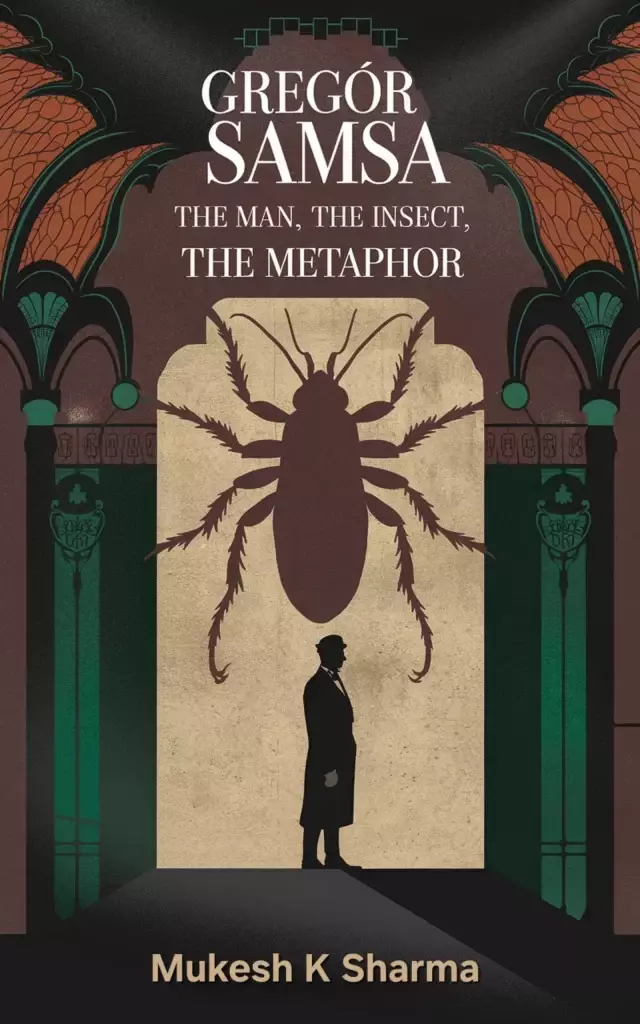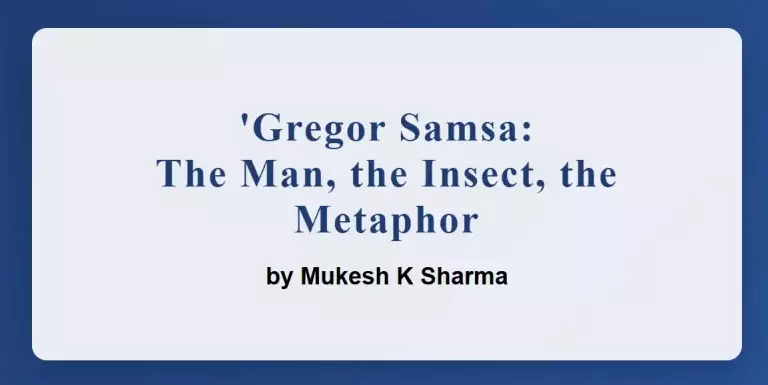In the world of book analysis few works have grasped the core of Franz Kafka’s puzzling masterpiece “The Metamorphosis” like Mukesh K Sharma’s “Gregor Samsa: The Man, the Insect, the Metaphor.” This eye-opening study digs deep into one of literature’s most baffling characters giving readers a rich look at Gregor Samsa’s lasting effect on today’s ideas and culture.
Sharma’s book shows how powerful literary symbols can be. It follows Samsa’s journey from a simple character in a short novel to a deep symbol of what it means to be human. The author digs deep and looks at Kafka’s creation. This helps us see why this man who turns into a bug still speaks to readers over 100 years after Kafka wrote about him.
Historical Context: Prague and the Austro-Hungarian Empire
The book shines in how it puts Gregor Samsa in context. Sharma spends whole chapters looking at the social and political scene in the Austro-Hungarian Empire and what life was like for Jews in Prague at the start of the 1900s. This history gives readers a deep grasp of what shaped Kafka’s view of the world and, in turn how he created Samsa.
Family Dynamics and Filial Duty
The author looks at family relationships and kids’ duties to parents in Kafka’s era. This gives us a moving way to see Gregor’s sad change. By putting the character in the setting of what society expected in the early 1900s, Sharma shows the hidden tensions that push the story of “The Metamorphosis” forward.
Modernism and Existentialism Grow
As the book goes on, it follows how modernism and existentialism got bigger showing how Gregor Samsa became a key figure for these ways of thinking. Sharma’s study of Kafka’s writer friends and what inspired him gives us useful details about the world of ideas that created one of literature’s longest-lasting symbols of feeling cut off and how life can be absurd.

Gregor Samsa Beyond the Page
“Gregor Samsa: The Man, the Insect, the Metaphor” takes a deep dive into the character’s journey outside Kafka’s novella, which stands out as one of its most interesting parts.
Early Reception and Interpretations
Sharma digs into early reception and interpretations revealing how people’s understanding of Samsa changed as two World Wars cast their shadow.
Samsa on Stage and Screen
The “Samsa on Stage and Screen” chapter gives us an engaging look at how different media have adapted and reimagined this literary figure, showing how flexible and popular the character remains.
Existentialist Readings: Gregor and the Absurd
The book’s look at existentialist views in the chapter “Gregor and the Absurd” offers a mind-bending breakdown of how Samsa’s situation speaks to key questions about human life. Sharma’s skill in linking Kafka’s work to wider philosophical ideas shows the real depth and universal nature of Gregor Samsa as a symbol.
Contemporary Reimaginings
In its closing chapters, “Gregor Samsa: The Man, the Insect, the Metaphor” explores how today’s writers have reshaped and reused Samsa in their own stories. This part shows the character’s ongoing impact and proves how Kafka’s creation keeps changing and staying relevant as times change.
Sharma’s Writing Style: A Perfect Balance
Throughout the book, Sharma writes in a way that balances academic depth with readability. His enthusiasm for the topic is clear drawing readers in with a mix of smart analysis and gripping storytelling. This makes the book a key resource for Kafka experts and book lovers, while also serving as a great starting point for people new to “The Metamorphosis.”
Conclusion: The Lasting Impact of Gregor Samsa
“Gregor Samsa: The Man, the Insect, the Metaphor” goes beyond a simple breakdown of a story; it explores 20th and 21st-century thinking through one character who changes everything. Sharma shows us how books can capture big ideas and feelings, and how one tale can touch people across time and place.
If you like Franz Kafka modern writing, or how symbols in stories have changed over time, you need to read this book. It gives new ways to look at an old favorite asking readers to think again about Gregor Samsa and, in turn where they fit in a world that often makes no sense and pushes people away.
As we finish Sharma’s eye-opening study, we gain a new respect for Kafka’s brilliance and better grasp why Samsa still fascinates readers and scholars over a hundred years after his creation. “Gregor Samsa: The Man, the Insect, the Metaphor” shows the lasting impact of great writing and the endless potential of human creativity.
Publishing Details
For those eager to embark on this literary journey, “Gregor Samsa: The Man, the Insect, the Metaphor” by Mukesh K Sharma is widely available across various digital platforms. As of January 13, 2025, the ebook can be purchased from major retailers including:
- Barnes & Noble
- Rakuten Kobo
- Apple Books
- Amazon Kindle
- Everand
- tolino
- Baker & Taylor
- ODILO
- Palace Marketplace
- fable
The book is also accessible through popular library services such as:
- OverDrive
- hoopla
- Borrow Box
- cloudLibrary
- vivlio
- Smashwords
- Gardners
Whether you prefer to buy or borrow, Sharma’s insightful analysis of Kafka’s iconic character is just a click away, ready to transform your understanding of one of literature’s most enigmatic figures.


